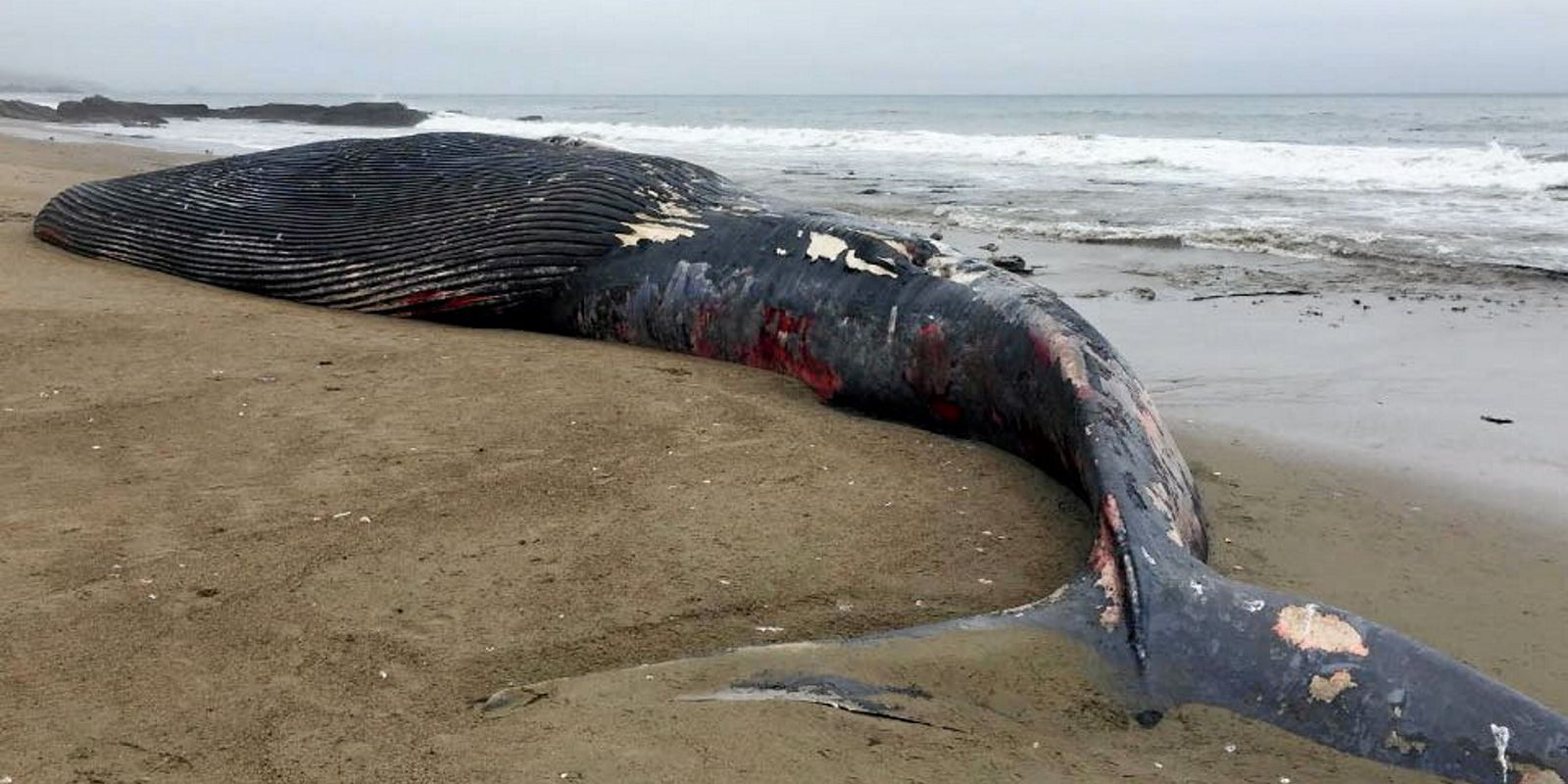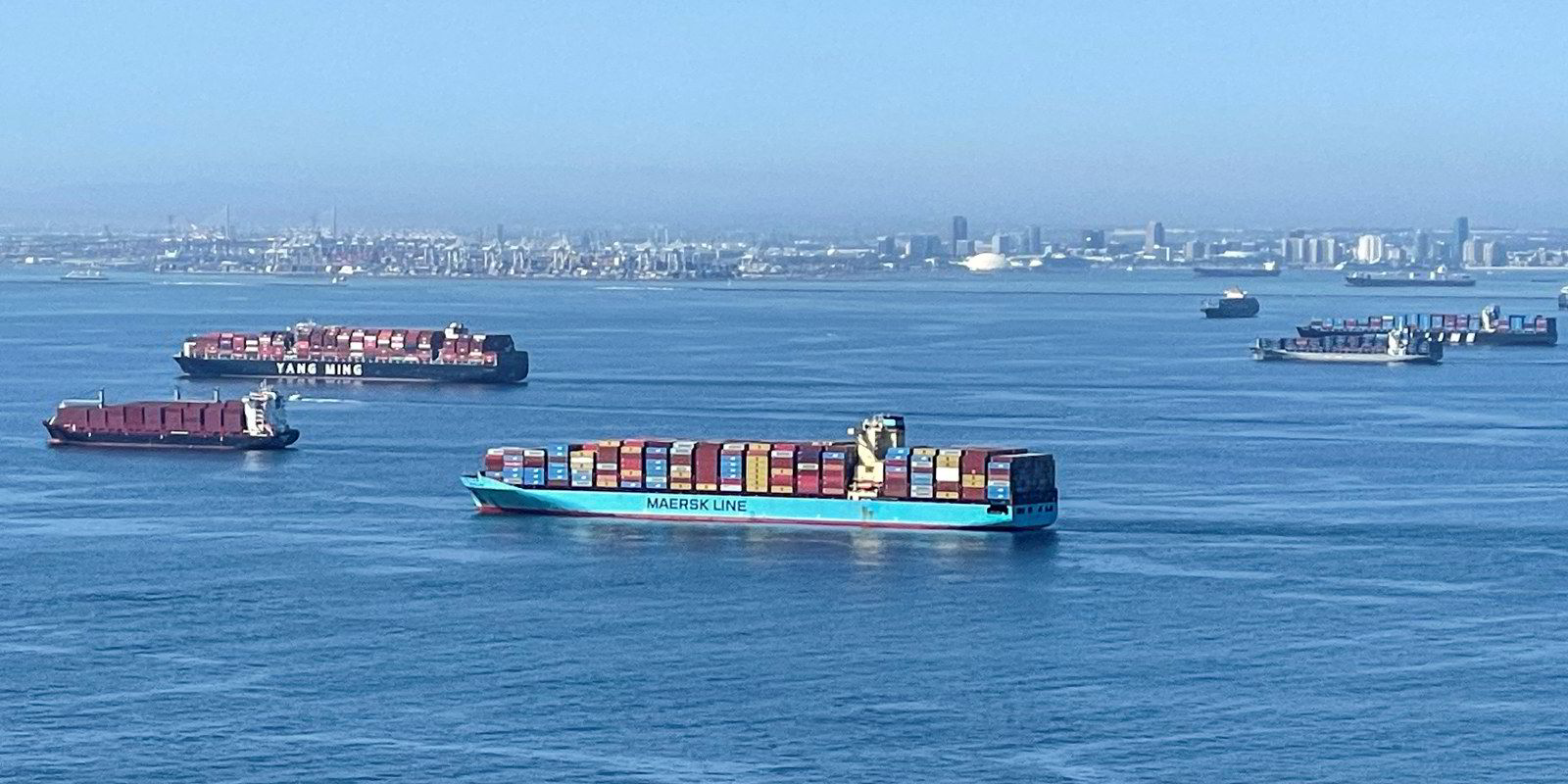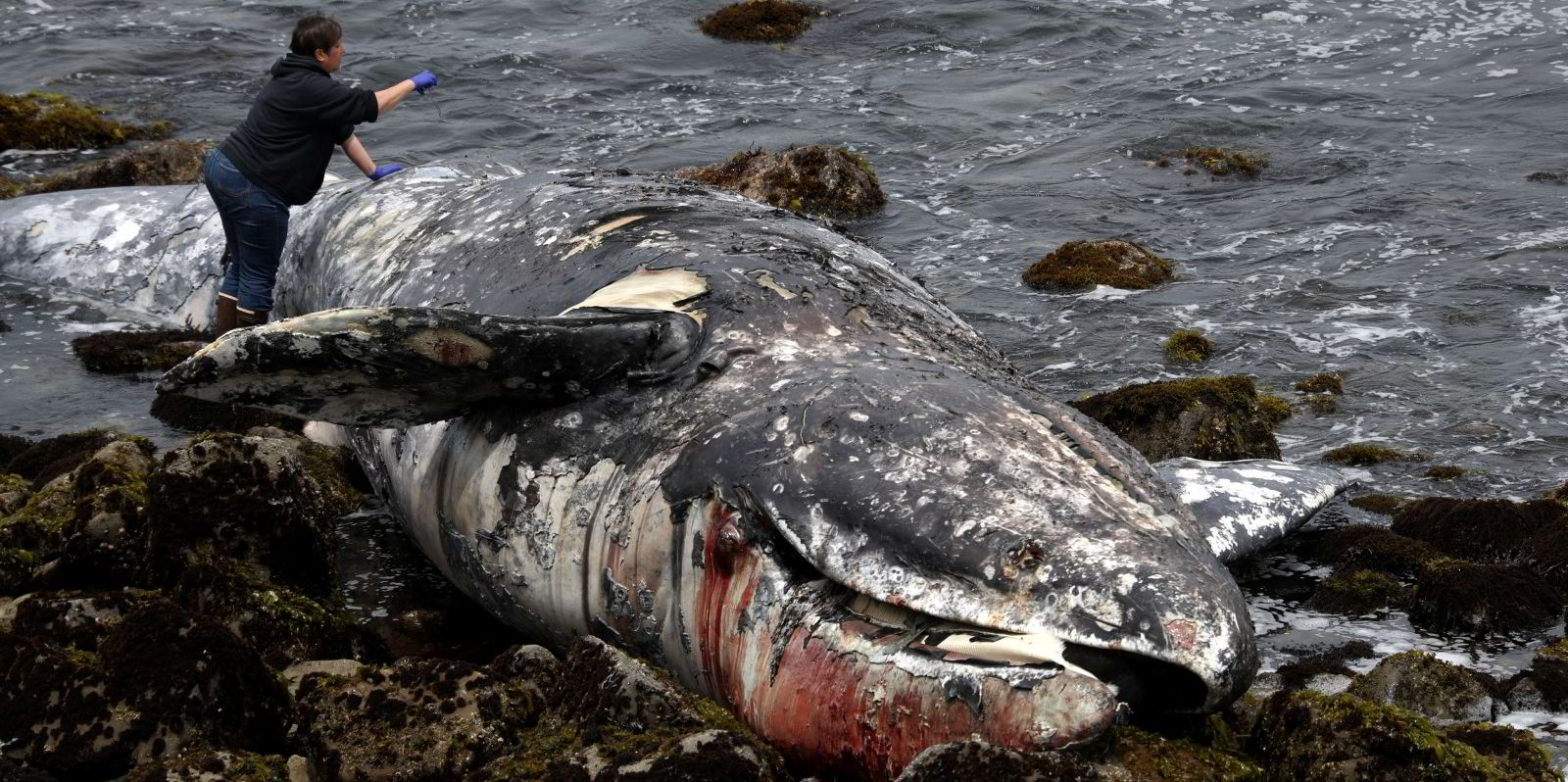The North Atlantic right whale population is at its lowest level in two decades. Further south, just 50 Rice's whales remain. And off California, endangered blue whales feed in busy shipping lanes.
In all these cases, collisions with vessels are seen as a key threat to whale populations in hotspots where cetacean advocates are asking the US government to impose mandatory speed limits, in addition to shifting maritime traffic away from the animal's feeding grounds.
In some cases, these experts argue that voluntary measures asking shipping to slow down or avoid waters that whales inhabit have proven insufficient.
Environmentalists are pressing the administration of President Joe Biden to take stronger action in the Pacific and Atlantic Oceans, as well as in the Gulf of Mexico.
"Far too many whales are dying from ship strikes in our oceans," said Kristen Monsell, oceans programme litigation director and senior attorney at Center for Biological Diversity. "It doesn't have to be that way."
She said it is well known that slowing down ships gives whales a chance to avoid collisions.

"We are disappointed that we haven't seen more action from the administration on this issue, because science shows that when you slow ships down you can save whales," she said of the Biden government, which took power in January.
The Center for Biological Diversity, in cooperation with other non-profit organisations, has filed several lawsuits and petitions in its efforts to persuade the federal government to adopt stronger measures to protect whales in US waters, including speed limits.
North Atlantic
Off the US Atlantic Coast, there are already a mix of mandatory and voluntary measures to protect the critically endangered right whales, but environmentalists have been fighting to expand the speed restrictions.
Despite measures to protect the species, data released in October by the North Atlantic Right Whale Consortium found its population had fallen to just 336, the lowest estimate in 20 years.

"That population is truly struggling," said Greg Silber, a biologist who studies whales at Smultea Sciences.
Vessel strikes are considered the right whale's second-biggest threat, after fishing gear entanglement.
Officials within the US government's National Oceanic and Atmospheric Administration (NOAA) have expressed an openness to considering proposals that bear similarities to what conservation groups have proposed.
A 2020 assessment of the restrictions aimed at protecting right whales found that vessel strikes have been reduced since the imposition of speed limits, but the agency said the data "indicates additional action is warranted to further reduce the threat of vessel collisions".
While compliance with mandatory seasonal 10-knot speed limits was at 85% overall, it was below 25% for large commercial ships outside four ports in the south-east.
But earlier this year, pilots at US ports urged exceptions to any expansion in key shipping channels, citing safety concerns.
Cruise Lines International Association told officials that exceptions needed to be made for large vessels without tugs for safe manoeuvrability.
US Pacific Coast
On America's west coast, endangered blue and fin whales are vulnerable to ship strikes.
While whale deaths frequently make headlines in the media in California, scientists believe that the bodies of many more victims of ship strikes sink to the bottom of the ocean, never to be counted.
There are two key ways to reduce whale strikes, according to the World Sustainability Organization:
- Separate ships and whales: Moving shipping lanes away from areas where whales congregate, such as feeding grounds, can help reduce the likelihood of collisions.
- Slow down: Studies show that reducing vessel speed gives whales more time to respond to an approaching vessel and can make collisions less likely to be lethal.
But off California, speed limits and measures to avoid areas where whales feed are voluntary, and the Center for Biological Diversity has petitioned the Biden administration to impose mandatory restrictions, in addition to suing the government to consider whales and endangered sea turtles in the traffic separation scheme in the waters off the state.
"We know that voluntary measures don't work," said Monsell, who highlighted conclusions by US officials of scant compliance with voluntary measures in the Atlantic.
In California, a coalition of federal and local agencies has created the Protecting Blue Whales and Blue Skies programme, which asks ships to slow down to protect whales and to reduce emissions.
The primary incentive for the shipping companies involved is public recognition for their involvement, though there are small payments funded by private donors and legal settlements of up to $50,000, payments that many lines decline.
"We want to draw recognition to the companies that are working with us and performing at very high levels of cooperation as measured by how slowly their fleet is going during the whale-sensitive, air quality-sensitive months," said Sean Hastings, an NOAA official who serves as resource protection coordinator for the Channel Islands National Marine Sanctuary off California and is involved in the effort.
The Channel Islands sanctuary is a haven for great whales, which stop there for half the year between their breeding and feeding grounds. But it is surrounded by busy shipping lanes.
Hastings said the whale population has seen some recovery in the decades since most whaling was outlawed, but ship strikes remain a major challenge.
He said there has been some success in moving shipping lanes that feed key California ports like Long Beach and Los Angeles. But the official at NOAA, which is part of the US Department of Commerce, said they can only be moved so far because of the need to maintain international trade in a safe and efficient manner.
The US government has also worked to establish places for ships to avoid under International Maritime Organization regulations.
For 2020, the effort recognised 16 global shipping companies for reducing speeds to 10 knots in the San Francisco Bay Area and Southern California during whale season. Mediterranean Shipping Co (MSC), Hapag-Lloyd, Yang Ming Marine Transport, Swire Shipping and MOL Auto Carrier Express were awarded for the highest compliance level in the programme.
For some of the biggest containership companies, the incentives work. Hastings said the fleet of MSC, for example, travelled at the 10 knot limit for more than 90% of its nautical miles in the vessel speed reduction zones during May to November last year.
Wolfram Guntermann, the director of regulatory affairs for Hapag-Lloyd's containership fleet, said his company's high participation in the California scheme is related to its sustainability and environmental policies, in which biodiversity is an important element.
"That's really a part of our DNA" he said. "You cannot just do greenwashing statements. You have to prove it."
During 2020, there were 483 ships in the programme, up from just 44 in 2017.
There are 18 shipping companies enrolled this year.
Hastings said the participants on average had about 50% to 60% cooperation with the programme's 10-knot voluntary speed limit.
But even though the programme has made much progress, he said 100% cooperation would "dramatically reduce" the risk of whale strikes, as well as cut emissions and ocean noise.
"At 50% to 60% cooperation it's not quite enough, so vessel speed regulation is on the horizon. We might have to go there," he said.
Gulf of Mexico
The world's newest whale species is also among its most endangered.
Earlier this year, scientists determined that what had been thought of as a subspecies known as the Gulf of Mexico Bryde's whale is, in reality, a separate species, now known as the Rice's whale. It has earned the nickname "America's whale", because it is the only great whale species known to live entirely in US waters.
And there are an estimated 50 left.
With the population that small, a single ship strike could have an impact on whether the species survives, particularly if a reproductive female is killed, Monsell said.

The NOAA cites oil and gas activity in the US waters of the Gulf of Mexico as a key threat to the species. Officials have proposed speed limits for vessels in the energy industry and measures that would see ships avoid some areas at night, when the whales feed closer to the surface.
Environmental groups have petitioned the federal government to go further, by adopting a year-round, 10-knot speed limit for all vessels.
"There's a whole host of other vessels out there in the Gulf of Mexico," Monsell said.
Whale strikes are a global problem, as rising seaborne trade leads to more ships transiting areas where the animals congregate.
Experts point to two key methods for protecting whales from ships: reducing speed and moving vessel traffic away from areas where the animals congregate.
While collisions with ships can be harmful to any whale population, they can be particularly severe for those that are depleted, said Silber, the Smultea biologist.
"Any time you remove one or two individuals from a small population, it can have ramifications for decades," he said.




